#photosecession
Text

Gertrude Käsebier :: Zitkala Sa, Sioux Indian and activist, ca. 1898 | src NMAH
view more Zitkala-sa by Käsebier on wordPress
#gertrude kasebier#zitkala sa#sioux#native american#pictorial portrait#pictorialist portrait#pictorialism#photosecession#gertrude käsebier#portrait#women artists#women photographers#beauty#gertrude simmons#red bird
1K notes
·
View notes
Photo
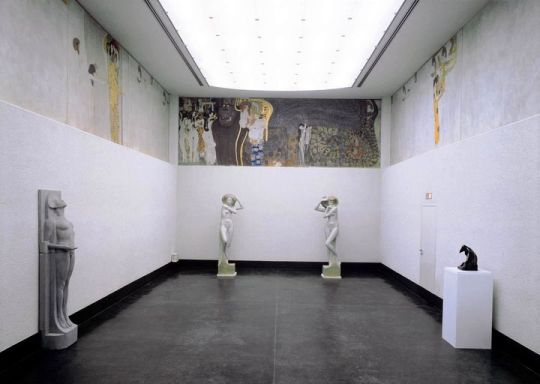
Beethoven Frieze (view of the room) 1902 - PhotoSecession Building, Vienna
2 notes
·
View notes
Text

S.Malcolm
#bleakmidwinter#industrialvintage#industrialart#1920s#dramatic#photosecession#camerawork#suspenders#tweed#vintage#peakyblinders#tabacco
1 note
·
View note
Photo

"𝕬𝖌𝖆𝖎𝖓𝖘𝖙 𝖒𝖞 𝖙𝖎𝖗𝖊𝖉, 𝖘𝖙𝖗𝖚𝖌𝖌𝖑𝖎𝖓𝖌 𝖍𝖊𝖆𝖗𝖙... 𝕴 𝖜𝖔𝖚𝖑𝖉 𝖌𝖔 𝖋𝖗𝖊𝖊... 𝕭𝖊𝖑𝖔𝖛𝖊𝖉 𝕰𝖆𝖗𝖙𝖍." - Anne W. Brigman 🕷️🕷️🕷️🕷️🕷️🕷️🕷️ Anne Wardrope Brigman (1869 - 1950) was an original member of the Photo-Secession movement in American photography, famous for her pictorialist female nudes set agains wild Californian landscapes. She explored nature and the feminine form in unison, or juxtaposition, as powerful forces. Most commonly, the cedar tree featured in her portraiture, which Merry A. Foresta suggests, in 'American Photographs: The First Century' (1996), is a nod to the tale of Daphne. A Naiad Nymph from Greek Mythology, Daphne escaped Apollo's pursuit by transforming into a laurel tree. 🎞️: You can read a short version of this tale in my stories today. Considering this connection and, as one of the first documented women professionally photographing the naked female form in the early 20th century, the narratives Brigman depicted can be read as feminist ones, of freedom or liberation. Brigman was also a poet, publishing a collection of photographs and poems side by side. 👉: Swipe to read 'Cry' in its entirety. 📸: Close-up of 'The Dying Cedar', Anne W. Brigman, (1909) via Wiki Commons, and "Cry" from 'Songs of a Pagan', Anne W. Brigman (1946) via @yale university's @beineckelibrary (Rare Book & Manuscript) public online archive. . #annewbrigman #annewaldropebrigman #americanphotographer #photosecession #blackandwhitephotography #pictorial #femaleform #nudephotography #landscapephotography #california #wildwest #western #thedyingcedar #songsofapagan #pagan #feminist #poet #poetry #spookynerd #bookish #bookstgram #generallygothic #gothic #rarebookcollection #greekmythology #daphne #daphneandapollo https://www.instagram.com/p/B4dp9RQgZO0/?igshid=1hj2p8zcpca6n
#annewbrigman#annewaldropebrigman#americanphotographer#photosecession#blackandwhitephotography#pictorial#femaleform#nudephotography#landscapephotography#california#wildwest#western#thedyingcedar#songsofapagan#pagan#feminist#poet#poetry#spookynerd#bookish#bookstgram#generallygothic#gothic#rarebookcollection#greekmythology#daphne#daphneandapollo
2 notes
·
View notes
Photo

☺☺कुछ खोये बिना हमने पाया है, कुछ मांगे बिना हमें मिला है नाज़ है हमें अपनी तक़दीर पर जिसने आप जैसे दोस्त से मिलाया है😊😊 #lovemyself #dosti #mylove #photoshoot #photosecession #photography #sunrise #mrprincesinghrajput (at Doston ki Duniya) https://www.instagram.com/mrprincesinghrajput/p/Bv31bkiHguv/?utm_source=ig_tumblr_share&igshid=1j5myvldv380a
0 notes
Text
Workshop: 2 day oilprinting workshop with Radoslaw Brzozowski, Gdynia, Poland 21-22nd August 2021
Details of event:
Oilprint, along with its sister technique of bromoil are among the most beautiful manipulative processes associated with pictorial photography and the American photosecession. It is a painterly technique which, like few others, allows for a huge level of image manipulation and thus self expression. It’s enough to say that this was the technique of choice of such masters as…
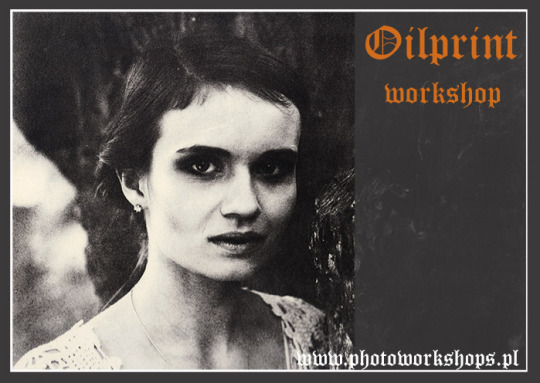
View On WordPress
0 notes
Text
Edward Steichen

[Marion Morehouse, 1926]
Noted as an innovator of modern fashion photography, Edward Steichen was one of the 20th centuries most ‘dynamic and significant photographic figures’.
Starting his career in the early 1920′s, he was a member of the Pictorialist movement and the Photosecession in the early 1900′s, which was a movement that gave birth to modern photography. Even with the Second World War breaking out he still continued his career in photography as he became a Captain of a Naval aerial photography and then the first Director of the department of photography at the Museum of Modern Art, New York.
Steichen’s gateway into fashion photography came when he was offered one of the most prestigious roles as chief photographer for Condé Nast’s influential magazines Vogue and Vanity Fair. With his innovative approach to portraiture within Vanity Fair he photographed movie stars, musicians, dancers and even writers such as W.B. Yeats. Though he did not invent fashion photography, the images that he produced during this time have been noted as ‘templates’ for modern fashion photography.
Within each of his fashion shoots Steichen always ensured that the model was the main focal point of the image which is evident within the image above as the light is centred onto her figure. Creating an intense shadow due to the centralised light, this adds an almost film noir feel to the image as Marion is placed as the femme fatale within the image. A relatively neutral background has been used which allows all the attention to remain on the model rather than creating a distraction, which in combination with the centralised placement of the model adds to Steichen’s rule for fashion shoots.
While Edward Steichen wanted to place focus on each of his models, within the image above it is clear to see that he also kept in mind the commercial demands of the shoot as his pictorials roots are evident in the images tonal richness. Also his control over light has allowed the shimmer and texture of the dress to be brought to the forefront as the fabric of the dress is on full display.
In my opinion, Steichen’s work is classical as he brought the images within Vogue and Vanity Fair onto a whole new level as he created high fashion and glamorous images that complemented the designers work exceptionally. One of the reasons that I chose this image above is because of the confidence that the model radiates which to me shows the strong relationship that Steichen was able to create with the models that he shot. To me, his crisp, detailed and high-key style can be still seen today within fashion magazines which shows how influential his impact on the fashion world actually was as I believe the world of fashion would be much different if he was never apart of it.
https://huxleyparlour.com/edward-steichen-and-the-birth-of-modern-fashion-photography-2/
https://www.theguardian.com/artanddesign/gallery/2014/oct/29/fashion-edward-steichens-trailblazing-vogue-photographs-vanity-fair-in-pictures
https://www.fep-photo.org/exhibition/edwardsteichenin-high-fashion-1923-1937/
0 notes
Photo
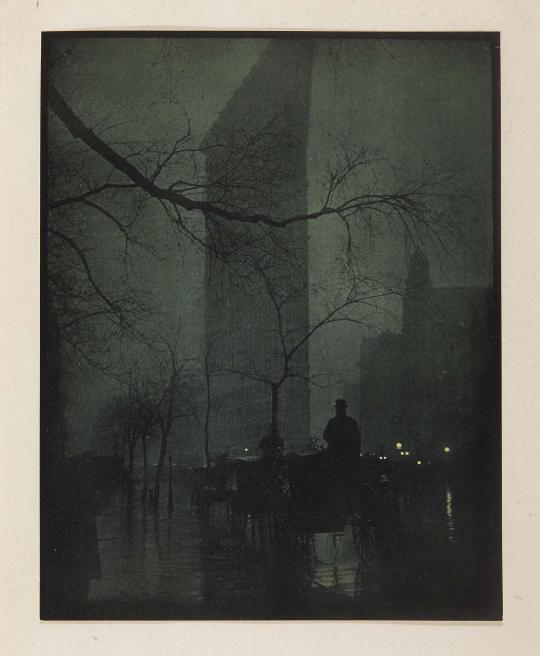

TOP:
The Flatiron-Evening
(from Camera Work, number 14, 1906, three-color half-tone reproduction)
Edward Steichen
BOTTOM:
Looking Northwest from The Shelton
1932
Alfred Stieglitz
------
In an unprecedented show for the National Arts Club in 1902, (Alfred) Stieglitz brought together photographs by pictorialists whose images he had published in Camera Notes. He titled the exhibition “The Photo-Secession,” to indicate a revolt from hackneyed style and technique as well as from lax artistic standards. Stieglitz believed that photography possessed a unique aesthetic which had been ignored too long by American photographers. His convictions paralleled those of European secessionist groups, most notably the English Linked Ring. Ironically, the secessionist photographers espoused a style that was scarcely unique to photography: their works expressed the same concerns as contemporary impressionist paintings, emphasizing the mood of a spontaneous moment through atmosphere and light.
[...]
By 1917…Stieglitz and many of his colleagues had altered their conception of the proper photographic style. They argued that the medium was uniquely equipped top convey the essence of
physical reality through the representation of clearly focused detail, an approach that came to be known as straight photography.
Amy Meyers
Classic Essays on Photography, Ed. Alan Trachtenberg
43 notes
·
View notes
Text

Edward Weston (1886-1958) ~ Dancer in front of a silver screen, Glendale Studio, ca. 1921 | src Swann galleries
View on WordPress
#Edward Weston#dancer#Tänzerin#danseuse#danzatrice#bailarina#Edward Henry Weston#photosecessionism#photosecession#pictorialism#pictorialisme#pictorialismo#Piktorialismus#portrait#Porträt#retrato#ritratto#portret#retrat#1920s#Bildnis#silver screen#studio photography#glendale studio
164 notes
·
View notes
Text
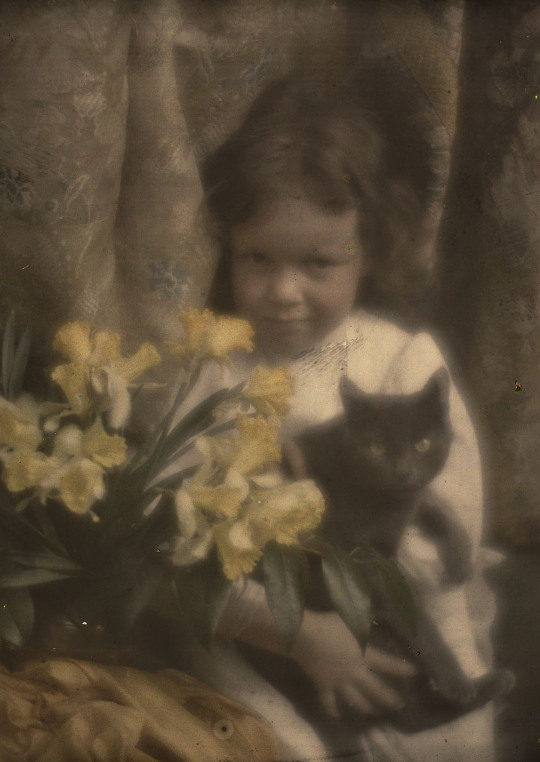
Edward J. Steichen ~ Portrait of the Misses Sawyer, ca. 1914. Autochrome | src MoMA
view on wordPress
#edward steichen#black cat#portrait#schwarze Katze#autochrome#early color photography#edward jean steichen#chat noir#pictorialism#photosecession#pictorial portrait#the misses sawyer#MoMA#1910s#narcissus#cat#chat#Katze#gato negro#gatto#Caturday#vintage cats#additive color screen plate#early colour#pets#Haustiere#pictorialisme
134 notes
·
View notes
Text
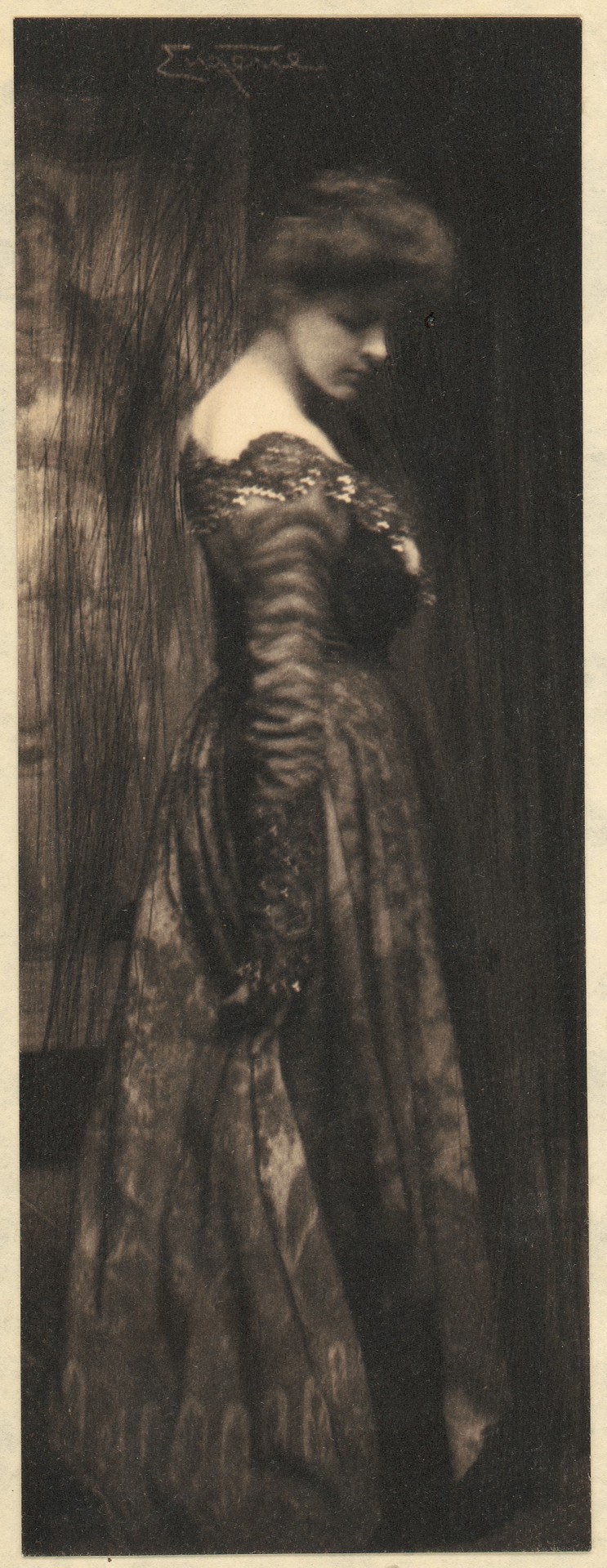
Frank Eugene (1865–1936 ) ~ Miss Ide, 1890–1903. Platinum print. | src The Met
#frank eugene#portrait#full length portrait#pictorialism#photosecessionism#photosecession#american pictorialism#1890s#1900s#early 1900s#miss ide#platinum print#the met
242 notes
·
View notes
Text

Clarence Hudson White (1871–1925) ~ Larsen Dancers, ca. 1923 – 1924. Platinum prints. | src Princeton University Art Museum
view more on wordPress

view more on wordPress
#clarence hudson white#clarence h. white#c.h. white#pictorialism#larsen dancers#the larsen dancers#pictorial motive#1920s#photosecessionism#photosecession#pictorialisme#Piktorialismus#pictorialismo#women in landscape
86 notes
·
View notes
Text
Freeman by Stieglitz (hands)
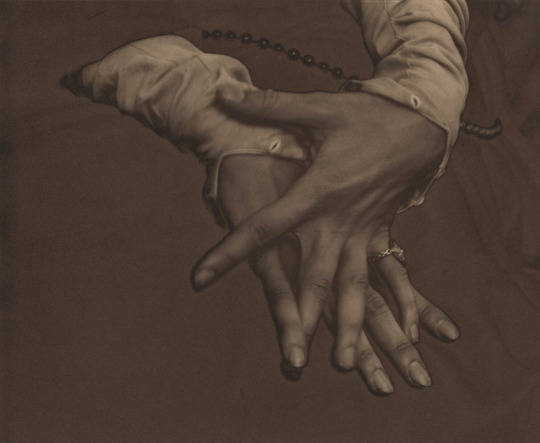
Alfred Stieglitz :: Helen Freeman [hands], 1921. Palladium print. Alfred Stieglitz Collection · NGA

View more on WordPress
#Alfred Stieglitz#Helen Freeman#hande#hands#mains#Helen Freeman Corle#photosecessionism#photosecession#pictorialism#stage actress#pictorialisme#Piktorialismus#1920s#pictorialismo#NGA
269 notes
·
View notes
Text

Alfred Stieglitz :: Kitty Stieglitz, 1915-1916. Autochrome. Alfred Stieglitz Collection. | src National Gallery of Art
View more on WordPress
#Alfred Stieglitz#additive color screen plate#Autochrome#portrait#Lumière Autochrome#early color#early colour#kitty stieglitz#NGA#photosecessionism#photosecession#1910s#autochrom#Porträt#retrato#ritratto#portret#autokrom#autochrome#retrat#Bildnis
328 notes
·
View notes
Text

Alfred Stieglitz :: Unknown Woman, 1907. Autochrome. Alfred Stieglitz Collection | src National Gallery of Art
view more on wordPress
#Alfred Stieglitz#Autochrome#portrait#pictorial portrait#Lumière Autochrome#balcony#dreamy#early color#early colour#mood#NGA#pensive#photosecessionism#photosecession#1900s#pictorialism#pictorialisme#pictorialismo#Piktorialismus#pictorialist portrait#additive color screen plate#autochrom#Porträt#retrato#ritratto#autochrome#autokrom#portret#retrat#Bildnis
183 notes
·
View notes
Text

Clarence Hudson White (1871–1925) ~ Larsen Dancers [7/11], ca. 1923 – 1924. Platinum print. | Princeton University Art Museum
View more on wordPress

Clarence Hudson White (1871–1925) ~ Larsen Dancers [6/11], ca. 1923 – 1924. Platinum print. | Princeton University Art Museum
view more on wordPress
#c.h. white#Clarence Hudson White#Clarence H. White#dancer#Tänzerin#danseuse#danzatrice#bailarina#dancers#greek gown#larsen dancers#open air dance#outdoor dance#photosecessionism#photosecession#pictorial motive#1920s#pictorialism#pictorialisme#pictorialismo#Piktorialismus#platinum print#princeton art museum#the larsen dancers#women in landscape
50 notes
·
View notes